New Products & Services
May 2021
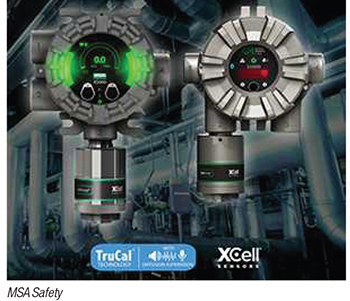 The new TruCal calibration technology, included with this company’s Ultima X5000 and General Monitors S5000 gas detectors (photo) for H2S and CO, means that the devices require no calibration checks for up to 24 months. Typically, a gas sensor’s electrolyte, or one or more of the electrodes, may limit the life of the sensor, especially in high-temperature or humid environments. These conditions and issues often require frequent recalibration or clearing of blocked sensors in harsh environments. The TruCal technology solves these problems with an extended calibration technology, which automatically self-checks and corrects sensor drift to extend calibration cycles using adaptive environmental-compensation (AEC) algorithms. This capability eliminates bump checks and assures the user that the sensor is healthy, measuring accurately and capable of detecting gas continuously. — MSA Safety, Cranberry Township, Pa.
The new TruCal calibration technology, included with this company’s Ultima X5000 and General Monitors S5000 gas detectors (photo) for H2S and CO, means that the devices require no calibration checks for up to 24 months. Typically, a gas sensor’s electrolyte, or one or more of the electrodes, may limit the life of the sensor, especially in high-temperature or humid environments. These conditions and issues often require frequent recalibration or clearing of blocked sensors in harsh environments. The TruCal technology solves these problems with an extended calibration technology, which automatically self-checks and corrects sensor drift to extend calibration cycles using adaptive environmental-compensation (AEC) algorithms. This capability eliminates bump checks and assures the user that the sensor is healthy, measuring accurately and capable of detecting gas continuously. — MSA Safety, Cranberry Township, Pa.
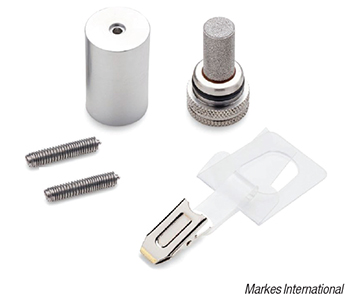 The new POD (pocket diffuser) sampler (photo) is a passive sampler that combines the benefits of radial and axial samplers for volatile organic compounds (VOCs). POD gas samplers provide improved sensitivity and accuracy, along with faster response times, when compared to other passive samplers, says the company, while also bringing the additional benefit of re-usability. POD sampler cartridges can be reconditioned and reused over 100 times, which is around five times greater than traditional radial samplers, and the sampler itself can be used indefinitely. These benefits make large-scale air-monitoring studies easier to run and more affordable. Furthermore, the sampler’s optimized radius ratio ultimately reduces the amount of adsorbent material required. The POD sampler is compatible with any commercial thermal desorption system. — Markes International Ltd., Bridgend, U.K.
The new POD (pocket diffuser) sampler (photo) is a passive sampler that combines the benefits of radial and axial samplers for volatile organic compounds (VOCs). POD gas samplers provide improved sensitivity and accuracy, along with faster response times, when compared to other passive samplers, says the company, while also bringing the additional benefit of re-usability. POD sampler cartridges can be reconditioned and reused over 100 times, which is around five times greater than traditional radial samplers, and the sampler itself can be used indefinitely. These benefits make large-scale air-monitoring studies easier to run and more affordable. Furthermore, the sampler’s optimized radius ratio ultimately reduces the amount of adsorbent material required. The POD sampler is compatible with any commercial thermal desorption system. — Markes International Ltd., Bridgend, U.K.
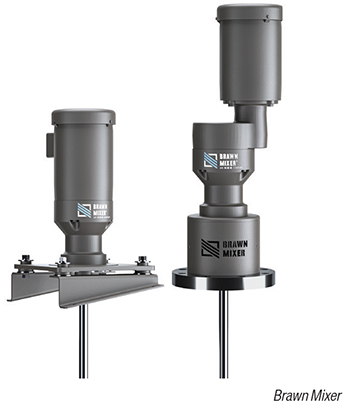 This company’s B Series of liquid mixing systems (photo) are designed for blending, solids suspension, gas dispersion, heat transfer and low- or high-viscosity liquid mixing, with mixing volumes up to 5,000 gal. These mixing systems can be engineered for either hygienic environments or general industrial applications, for open- or closed-tank configurations. The B Series’ motor specifications include severe-duty and explosion-proof designs, stainless-steel construction and power ratings up to 5 hp. — Brawn Mixer, Holland, Mich.
This company’s B Series of liquid mixing systems (photo) are designed for blending, solids suspension, gas dispersion, heat transfer and low- or high-viscosity liquid mixing, with mixing volumes up to 5,000 gal. These mixing systems can be engineered for either hygienic environments or general industrial applications, for open- or closed-tank configurations. The B Series’ motor specifications include severe-duty and explosion-proof designs, stainless-steel construction and power ratings up to 5 hp. — Brawn Mixer, Holland, Mich.
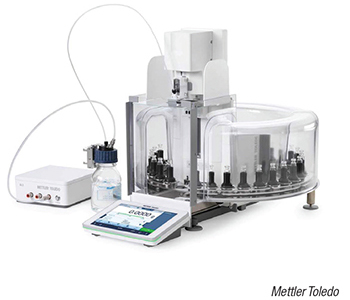 The XPR automatic balance (photo) applies active machine learning to powder weighing, delivering accuracy, speed and safety for weighing potentially toxic or active substances. The XPR significantly reduces exposure risk while ensuring precision and safety by dosing from an enclosed head into target vials or capsules with openings as small as six millimeters in diameter. It then uses live feedback to learn a substance’s flow characteristics and improve dispensing efficiency in real time. This can be particularly effective when combined with a sample changer that can process as many as 30 samples in one automated run. Spill risk is also eliminated, as is the need to repeatedly open the balance door and transfer compounds from the main container into a secondary container. The dimensions of the balance mean that it can be operated inside a glove box or safety enclosure, further enhancing containment. — Mettler Toledo, LLC, Columbus, Ohio
The XPR automatic balance (photo) applies active machine learning to powder weighing, delivering accuracy, speed and safety for weighing potentially toxic or active substances. The XPR significantly reduces exposure risk while ensuring precision and safety by dosing from an enclosed head into target vials or capsules with openings as small as six millimeters in diameter. It then uses live feedback to learn a substance’s flow characteristics and improve dispensing efficiency in real time. This can be particularly effective when combined with a sample changer that can process as many as 30 samples in one automated run. Spill risk is also eliminated, as is the need to repeatedly open the balance door and transfer compounds from the main container into a secondary container. The dimensions of the balance mean that it can be operated inside a glove box or safety enclosure, further enhancing containment. — Mettler Toledo, LLC, Columbus, Ohio
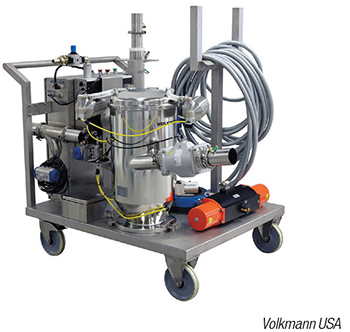 The ATEX-certified Inert Explosion-proof (INEX) pneumatic vacuum-conveying system (photo) features an optional mobility package. Setting the entire conveying system on a self-contained, rolling platform, the mobile INEX system enables processors to safely convey dry and wet powders in hazardous environments where explosive vapors may be present, then easily move the entire conveying system to other production or processing lines without concern for risk of explosion. Ideal for loading metal powders and other self-ignitable materials into reactors and vessels amid flammable or explosive gases, and for transferring hybrid materials mixed with solvents, the mobile INEX pneumatic vacuum conveyor fluidizes the material with nitrogen or other inert gas to create an inert atmosphere throughout the entire conveying process. The patented approach ensures explosion-proof operation in ATEX Zone 0 areas where an explosive mixture is continuously present or present for long periods of time. — Volkmann USA, Inc., Bristol, Pa.
The ATEX-certified Inert Explosion-proof (INEX) pneumatic vacuum-conveying system (photo) features an optional mobility package. Setting the entire conveying system on a self-contained, rolling platform, the mobile INEX system enables processors to safely convey dry and wet powders in hazardous environments where explosive vapors may be present, then easily move the entire conveying system to other production or processing lines without concern for risk of explosion. Ideal for loading metal powders and other self-ignitable materials into reactors and vessels amid flammable or explosive gases, and for transferring hybrid materials mixed with solvents, the mobile INEX pneumatic vacuum conveyor fluidizes the material with nitrogen or other inert gas to create an inert atmosphere throughout the entire conveying process. The patented approach ensures explosion-proof operation in ATEX Zone 0 areas where an explosive mixture is continuously present or present for long periods of time. — Volkmann USA, Inc., Bristol, Pa.
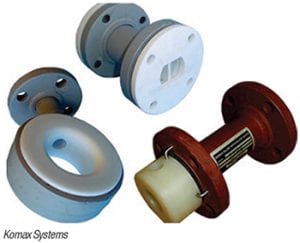 This company has launched a Kynar-lined static mixer (photo) to enable homogenization and dispersion of liquids and gases without using any moving parts. Due to its enhanced chemical resistance and high-temperature capacity, this mixer is appropriate for challenging chemical applications, including those using concentrated acids or other corrosive media. Constructed of 40 carbon steel, 316 stainless steel, PVC and fiberglass, these static mixers can be lined with Kynar or Teflon and are available in standard diameters ranging from 1 to 24 in. The Teflon mixing elements are 25% glass-filled for additional strength and extended lifespan. — Komax Systems, Inc., Huntington Beach, Calif.
This company has launched a Kynar-lined static mixer (photo) to enable homogenization and dispersion of liquids and gases without using any moving parts. Due to its enhanced chemical resistance and high-temperature capacity, this mixer is appropriate for challenging chemical applications, including those using concentrated acids or other corrosive media. Constructed of 40 carbon steel, 316 stainless steel, PVC and fiberglass, these static mixers can be lined with Kynar or Teflon and are available in standard diameters ranging from 1 to 24 in. The Teflon mixing elements are 25% glass-filled for additional strength and extended lifespan. — Komax Systems, Inc., Huntington Beach, Calif.
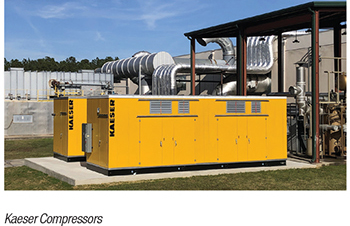 KASE air-system enclosures (photo) is available in several standard configurations, including two 100-hp, one 250-hp, or three 100-hp rotary-screw compressor units with refrigerated dryers. Also available is a 125-hp oil-free package with a heat-of-compression dryer. Instead of selecting compressed-air equipment and coordinating onsite installation with contractors, KASE units provide complete compressed-air systems in a temperature-controlled, weatherproof enclosure, says the manufacturer. This makes them suitable for quickly expanding or replacing a compressed-air system to maximize plant productivity, or to remove a source of heat and noise from the plant and free up floor space for other uses. KASE units feature a full walk-in design, and are rated for 110-mph wind loads and 50 lb/ft2 snow load. They include fully insulated, sound-dampening paneling, as well as entry doors and removable access panels for major service. These systems can be remotely monitored, and service providers do not need access to production areas, improving plant safety and security. — Kaeser Compressors, Inc., Fredericksburg, Va.
KASE air-system enclosures (photo) is available in several standard configurations, including two 100-hp, one 250-hp, or three 100-hp rotary-screw compressor units with refrigerated dryers. Also available is a 125-hp oil-free package with a heat-of-compression dryer. Instead of selecting compressed-air equipment and coordinating onsite installation with contractors, KASE units provide complete compressed-air systems in a temperature-controlled, weatherproof enclosure, says the manufacturer. This makes them suitable for quickly expanding or replacing a compressed-air system to maximize plant productivity, or to remove a source of heat and noise from the plant and free up floor space for other uses. KASE units feature a full walk-in design, and are rated for 110-mph wind loads and 50 lb/ft2 snow load. They include fully insulated, sound-dampening paneling, as well as entry doors and removable access panels for major service. These systems can be remotely monitored, and service providers do not need access to production areas, improving plant safety and security. — Kaeser Compressors, Inc., Fredericksburg, Va.
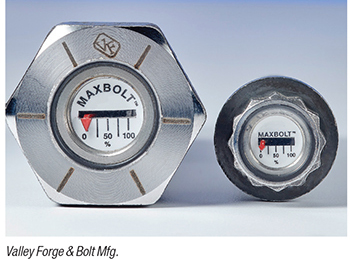 The new High Temp Maxbolt (photo) is able to operate in temperatures up to 650°F for proven performance in extended high-temperature run times and thermal cycling. High Temp Maxbolt, like the original Maxbolt, helps to reduce downtime, premature wear and catastrophic joint failures in critical industries, including chemical processing, mining and energy. Maxbolt has a built-in analog gage that enables installation technicians to know, at a glance, when proper load is achieved. During operation, technicians literally see if load ever falls out of specification on any bolt, addressing the need immediately instead of waiting for critical equipment failure. With an accuracy of ±5%, and compliance with ASTM F2482, the High Temp Maxbolt provides realtime tension indication, and operates in both rapid thermal cycle applications and in prolonged high-temperature situations. — Valley Forge & Bolt Mfg. Co., Phoenix, Ariz.
The new High Temp Maxbolt (photo) is able to operate in temperatures up to 650°F for proven performance in extended high-temperature run times and thermal cycling. High Temp Maxbolt, like the original Maxbolt, helps to reduce downtime, premature wear and catastrophic joint failures in critical industries, including chemical processing, mining and energy. Maxbolt has a built-in analog gage that enables installation technicians to know, at a glance, when proper load is achieved. During operation, technicians literally see if load ever falls out of specification on any bolt, addressing the need immediately instead of waiting for critical equipment failure. With an accuracy of ±5%, and compliance with ASTM F2482, the High Temp Maxbolt provides realtime tension indication, and operates in both rapid thermal cycle applications and in prolonged high-temperature situations. — Valley Forge & Bolt Mfg. Co., Phoenix, Ariz.
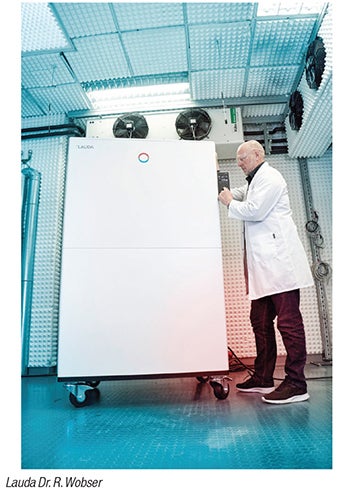 This company has expanded its product range for demanding temperature-control tasks with two devices: the new, pressure-blanketed Integral P variant (photo); and a new, high-performance device of the T variant. For the P variant, two device types, Integral IN 2050 PW and IN 2560 PW, function according to the pressure-blanketing principle. The devices, which are equipped with a stainless-steel pressure vessel, significantly expand the temperature range of flammable heat carriers. In the pressure-blanketing process, the compressed air supply is used to fill the device with negative pressure, which sucks the temperature control medium into the device with a vacuum of –0.2 bars. Integral P process thermostats can be used within a working temperature range from –40 to 140°C, with a cooling capacity of 20 kW and 25 kW, respectively. — Lauda Dr. R. Wobser GmbH & Co. KG Lauda-Königshofen, Germany
This company has expanded its product range for demanding temperature-control tasks with two devices: the new, pressure-blanketed Integral P variant (photo); and a new, high-performance device of the T variant. For the P variant, two device types, Integral IN 2050 PW and IN 2560 PW, function according to the pressure-blanketing principle. The devices, which are equipped with a stainless-steel pressure vessel, significantly expand the temperature range of flammable heat carriers. In the pressure-blanketing process, the compressed air supply is used to fill the device with negative pressure, which sucks the temperature control medium into the device with a vacuum of –0.2 bars. Integral P process thermostats can be used within a working temperature range from –40 to 140°C, with a cooling capacity of 20 kW and 25 kW, respectively. — Lauda Dr. R. Wobser GmbH & Co. KG Lauda-Königshofen, Germany
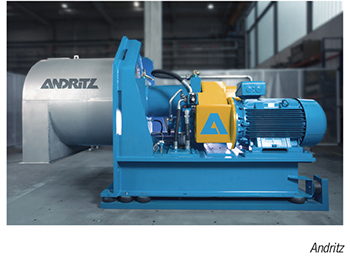 While traditional centrifuges have separate pusher and drive motors, the ecoOne pusher centrifuge (photo) has only one motor for both functions, thus significantly reducing installed power and power consumption. Pusher centrifuges with two motors generally only require the full power of the drive motor during the startup process, and the drive motor usually operates at partial load during steady-state operation. Conversely, the pusher motor runs at virtually no-load during machine startup because there are no solids in the machine yet to be pushed. Hence, the pusher motor does not operate under load until stationary operation begins. The ecoOne technology allows the reserve capacity available for pushing to be used for accelerating the basket during the startup process, while the reserve capacity available for the startup process can be used for pushing during stationary operation. This results in significantly lower installed power use and a motor that operates in the optimum efficiency range at all times. Total power consumption is thereby reduced by around 10 to 20%, while the installed power is reduced by around 20–40%, says the company. Furthermore, the new high-pressure pushing system cuts hydraulic fluid use by up to 40%. — Andritz AG, Graz, Austria
While traditional centrifuges have separate pusher and drive motors, the ecoOne pusher centrifuge (photo) has only one motor for both functions, thus significantly reducing installed power and power consumption. Pusher centrifuges with two motors generally only require the full power of the drive motor during the startup process, and the drive motor usually operates at partial load during steady-state operation. Conversely, the pusher motor runs at virtually no-load during machine startup because there are no solids in the machine yet to be pushed. Hence, the pusher motor does not operate under load until stationary operation begins. The ecoOne technology allows the reserve capacity available for pushing to be used for accelerating the basket during the startup process, while the reserve capacity available for the startup process can be used for pushing during stationary operation. This results in significantly lower installed power use and a motor that operates in the optimum efficiency range at all times. Total power consumption is thereby reduced by around 10 to 20%, while the installed power is reduced by around 20–40%, says the company. Furthermore, the new high-pressure pushing system cuts hydraulic fluid use by up to 40%. — Andritz AG, Graz, Austria
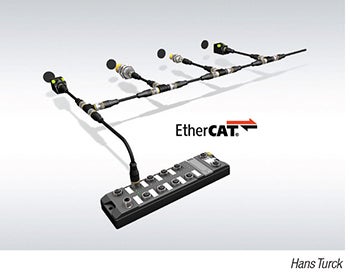 The TBEC series has been added to this company’s range of RFID solutions for fast interfaces to EtherCAT networks. The TBEC module (photo) in fully potted plastic housing comes with protection according to IP67/IP69K standards and can be used in an extended temperature range from –40 to 70°C. The EtherCAT RFID module enables HF and UHF read-write heads to run at the same time, thus simplifying applications with different bandwidths and reducing the range of inventory needed. The TBEC also supports the HF continuous bus mode by which up to 32 bus-capable HF read-write heads can be connected to each of the four RFID channels. Sensors, lights or other actuators can be connected to the eight universal DXP I/Os. All terminals are implemented as five-pin M12 male connectors, and the power supply (L-coded) is implemented with the future-proof M12 power technology. — Hans Turck GmbH & Co. KG, Mülheim an der Ruhr, Germany
The TBEC series has been added to this company’s range of RFID solutions for fast interfaces to EtherCAT networks. The TBEC module (photo) in fully potted plastic housing comes with protection according to IP67/IP69K standards and can be used in an extended temperature range from –40 to 70°C. The EtherCAT RFID module enables HF and UHF read-write heads to run at the same time, thus simplifying applications with different bandwidths and reducing the range of inventory needed. The TBEC also supports the HF continuous bus mode by which up to 32 bus-capable HF read-write heads can be connected to each of the four RFID channels. Sensors, lights or other actuators can be connected to the eight universal DXP I/Os. All terminals are implemented as five-pin M12 male connectors, and the power supply (L-coded) is implemented with the future-proof M12 power technology. — Hans Turck GmbH & Co. KG, Mülheim an der Ruhr, Germany
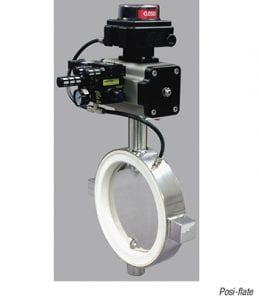 This company’s range of butterfly valves (photo) are offered with a highly polished 316 stainless-steel housing and disc, which make the valve suitable for many applications in the food, chemical and pharmaceutical industries. The inflatable seat design of the butterfly valve provides an improved seal by utilizing air pressure to expand the seat against the disc, providing more sealing area and an even pressure distribution against the disc every time it closes. The seat automatically compensates for wear when it inflates against the disc, extending valve life considerably. Because the valve’s disc only makes casual contact with the seat during opening and closing, torque requirements are substantially lower that those experienced with other butterfly-valve configurations. This ease of movement also allows the disc to come to a precise 90-deg position every time it opens. Additionally, the smooth profile of the disc eases material flow and reduces buildup. These stainless-steel butterfly valves are available in sizes ranging from 2 to 20 in. — Posi-flate, St. Paul, Minn.
This company’s range of butterfly valves (photo) are offered with a highly polished 316 stainless-steel housing and disc, which make the valve suitable for many applications in the food, chemical and pharmaceutical industries. The inflatable seat design of the butterfly valve provides an improved seal by utilizing air pressure to expand the seat against the disc, providing more sealing area and an even pressure distribution against the disc every time it closes. The seat automatically compensates for wear when it inflates against the disc, extending valve life considerably. Because the valve’s disc only makes casual contact with the seat during opening and closing, torque requirements are substantially lower that those experienced with other butterfly-valve configurations. This ease of movement also allows the disc to come to a precise 90-deg position every time it opens. Additionally, the smooth profile of the disc eases material flow and reduces buildup. These stainless-steel butterfly valves are available in sizes ranging from 2 to 20 in. — Posi-flate, St. Paul, Minn.
www.posiflate.com
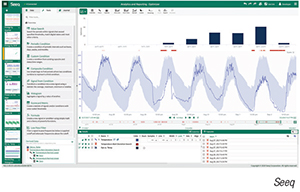 A new packaging of Seeq features and packages was launched in March that features and applications as Seeq Team and Seeq Enterprise editions (photo). Both, which run best as SaaS on AWS or Microsoft Azure, represent the culmination of learning and experiences with hundreds of Seeq deployments in process-manufacturing organizations. For these manufacturers, Seeq enables advanced analytics insights to improve production and business outcomes across their organizations. Seeq Cortex, a renaming of Seeq Server, is included in both editions and is the execution engine that delivers key features, including multi-source and type data connectivity, security, calculation scalability, and other features. Seeq Cortex ensures immediate and long-term support for user data architectures and IT requirements. Among the Cortex benefits is the abstraction of data sources with high speed connectivity to multiple and diverse time series and contextual data sources, including historians and SQL-based data sources. — Seeq Corp., Seattle, Wash.
A new packaging of Seeq features and packages was launched in March that features and applications as Seeq Team and Seeq Enterprise editions (photo). Both, which run best as SaaS on AWS or Microsoft Azure, represent the culmination of learning and experiences with hundreds of Seeq deployments in process-manufacturing organizations. For these manufacturers, Seeq enables advanced analytics insights to improve production and business outcomes across their organizations. Seeq Cortex, a renaming of Seeq Server, is included in both editions and is the execution engine that delivers key features, including multi-source and type data connectivity, security, calculation scalability, and other features. Seeq Cortex ensures immediate and long-term support for user data architectures and IT requirements. Among the Cortex benefits is the abstraction of data sources with high speed connectivity to multiple and diverse time series and contextual data sources, including historians and SQL-based data sources. — Seeq Corp., Seattle, Wash.
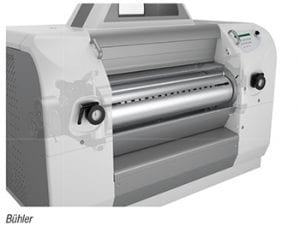 This company’s Insights platform is connected to the new temperature and vibration management (TVM) system (photo), which provides essential information on grinding processes based on proprietary algorithms. TVM detects critical operational conditions early so that proper action can be taken. Accurate management of grinding processes helps maintain the best product quality and consistency. Precise settings reduce energy consumption and product waste. The launch of TVM represents another significant step towards the fully digitalized and automated SmartMill. The TVM service is continuously developed further to maximize impact. Future features, for example, will include more advanced recommendations for automatic adjustments based on recipes. — Bühler AG, Uzwil, Switzerland
This company’s Insights platform is connected to the new temperature and vibration management (TVM) system (photo), which provides essential information on grinding processes based on proprietary algorithms. TVM detects critical operational conditions early so that proper action can be taken. Accurate management of grinding processes helps maintain the best product quality and consistency. Precise settings reduce energy consumption and product waste. The launch of TVM represents another significant step towards the fully digitalized and automated SmartMill. The TVM service is continuously developed further to maximize impact. Future features, for example, will include more advanced recommendations for automatic adjustments based on recipes. — Bühler AG, Uzwil, Switzerland
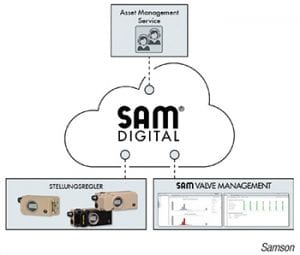 The web-based Sam Valve Management system (photo) gives users an overview of all connected control valves fitted with smart positioners from this company in a clearly structured dashboard displaying all relevant operating and diagnostic parameters. Malfunctions can be detected instantly. The system also analyzes all data based on an extensive range of algorithms and suggests recommended action with illustrated step-by-step instructions. The data in Sam Valve Management can be synchronized by transferring data from commonly available process control systems or Trovis-View software. The extensive diagnostic functions provided by Sam Valve Management help increase the availability of control valves by predicting imminent valve failure and maintenance demands. It also helps optimize plant profitability. — Samson AG, Frankfurt am Main, Germany
The web-based Sam Valve Management system (photo) gives users an overview of all connected control valves fitted with smart positioners from this company in a clearly structured dashboard displaying all relevant operating and diagnostic parameters. Malfunctions can be detected instantly. The system also analyzes all data based on an extensive range of algorithms and suggests recommended action with illustrated step-by-step instructions. The data in Sam Valve Management can be synchronized by transferring data from commonly available process control systems or Trovis-View software. The extensive diagnostic functions provided by Sam Valve Management help increase the availability of control valves by predicting imminent valve failure and maintenance demands. It also helps optimize plant profitability. — Samson AG, Frankfurt am Main, Germany
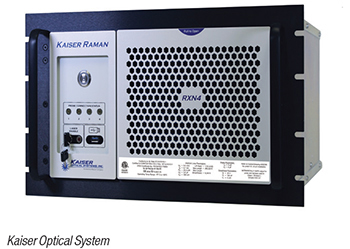 The Kaiser Raman embedded analyzer (photo) collects in-situ process measurements, enabling realtime process monitoring, optimization and control. With this continuous automation, users can maintain a continuous pulse on the safety, quality and efficiency of their operations — whether in laboratory or manufacturing settings. Kaiser Raman Rxn analyzers perform self-monitoring and self-diagnostics to ensure the validity of each measurement, and to enable seamless lab-to-process model transferability and equipment scalability. This latest Raman Rxn portfolio, comprised of the Raman Rxn2 and Rxn4 base analyzer models, integrates analyzer and control software in a fixed purpose device with built-in intelligence. To ease maintenance, Raman Rxn2 and Rxn4 analyzers perform self-calibration, utilizing spectral correction methods in applications when periodic system calibration is not required. The analyzers can be configured with 532-, 785- or 1,000-nm excitation wavelengths, with the ability to measure up to four channels. Measurements can be taken inline, online or at-line. — Kaiser Optical Systems, Inc., an Endress+Hauser company, Greenwood, Ind.
The Kaiser Raman embedded analyzer (photo) collects in-situ process measurements, enabling realtime process monitoring, optimization and control. With this continuous automation, users can maintain a continuous pulse on the safety, quality and efficiency of their operations — whether in laboratory or manufacturing settings. Kaiser Raman Rxn analyzers perform self-monitoring and self-diagnostics to ensure the validity of each measurement, and to enable seamless lab-to-process model transferability and equipment scalability. This latest Raman Rxn portfolio, comprised of the Raman Rxn2 and Rxn4 base analyzer models, integrates analyzer and control software in a fixed purpose device with built-in intelligence. To ease maintenance, Raman Rxn2 and Rxn4 analyzers perform self-calibration, utilizing spectral correction methods in applications when periodic system calibration is not required. The analyzers can be configured with 532-, 785- or 1,000-nm excitation wavelengths, with the ability to measure up to four channels. Measurements can be taken inline, online or at-line. — Kaiser Optical Systems, Inc., an Endress+Hauser company, Greenwood, Ind.
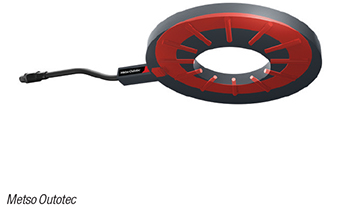 CycloneSense (photo) is a smart measurement system that provides direct and continuous online monitoring of a hydrocyclone air core, helping to prevent common problems in hydrocyclones, such as roping, while increasing uptime. In grinding and flotation processes, hydrocyclone operating conditions have a direct impact on overall plant availability and efficiency. CycloneSense technology allows users to visualize the performance inside the cyclone. It allows continuous online measurement of the cyclone’s air core shape, size and location based on process tomography, thus helping to find and maintain the optimal operating point for the hydrocyclone. In addition, the measurement system helps to detect and prevent potential problem situations, such as roping, where the slurry is not properly separated and instead some of the larger particles are sent to the overflow and directly to the next stage of processing. Combining CycloneSense with this company’s PSI particle-size analyzer allows for optimization of the cyclone cluster and grinding circuit. — Metso Outotec Oyj, Helsinki, Finland
CycloneSense (photo) is a smart measurement system that provides direct and continuous online monitoring of a hydrocyclone air core, helping to prevent common problems in hydrocyclones, such as roping, while increasing uptime. In grinding and flotation processes, hydrocyclone operating conditions have a direct impact on overall plant availability and efficiency. CycloneSense technology allows users to visualize the performance inside the cyclone. It allows continuous online measurement of the cyclone’s air core shape, size and location based on process tomography, thus helping to find and maintain the optimal operating point for the hydrocyclone. In addition, the measurement system helps to detect and prevent potential problem situations, such as roping, where the slurry is not properly separated and instead some of the larger particles are sent to the overflow and directly to the next stage of processing. Combining CycloneSense with this company’s PSI particle-size analyzer allows for optimization of the cyclone cluster and grinding circuit. — Metso Outotec Oyj, Helsinki, Finland
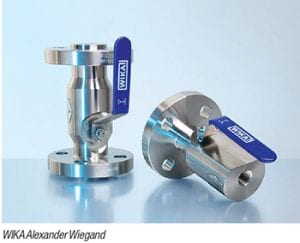 The compact design of this new monoblock with flange connection (photo) integrates a shutoff valve to separate the process from the instrument side. The one-piece construction and the double sealing (metal and plastic), tested in accordance with BS6755/ISO 5208 leakage rate A, ensure user and process safety. The model IBF1 can be fitted with either a ball valve or a needle valve. The new instrumentation valve complements the existing monoblock portfolio, which includes the models IBF2 (block and bleed) and IBF3 (double block and bleed). All IBF models can also be fitted on level indicators and differential-pressure measuring instruments for level measurement. — WIKA Alexander Wiegand SE & Co. KG, Klingenberg/Germany
The compact design of this new monoblock with flange connection (photo) integrates a shutoff valve to separate the process from the instrument side. The one-piece construction and the double sealing (metal and plastic), tested in accordance with BS6755/ISO 5208 leakage rate A, ensure user and process safety. The model IBF1 can be fitted with either a ball valve or a needle valve. The new instrumentation valve complements the existing monoblock portfolio, which includes the models IBF2 (block and bleed) and IBF3 (double block and bleed). All IBF models can also be fitted on level indicators and differential-pressure measuring instruments for level measurement. — WIKA Alexander Wiegand SE & Co. KG, Klingenberg/Germany
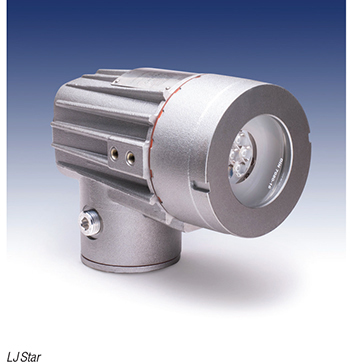 The new explosion-proof Lumiglas Model USL08LED-EX (photo) is said to be the brightest sight-glass light available on the market at 50% brighter than its competitors. Employing LED light, Lumiglas delivers a service life that is ten times greater than typical halogen lights, with one-fifth of the energy consumption. These lights can be precisely tuned to correct color temperatures, eliminating the distorting yellow glow of halogen lights that can affect vessel inspection. These sturdy, compact lights are now available with up to 2,200 lumens at a color temperature of 6,200 K. Designed for combination light/sight port or separate light- and sight-port vessel applications, Lumiglas lights are also suitable for specific area lighting, including sight-flow indicators, instruments, control panels, valve manifolds, walkways and more. The explosion-proof lights are also moisture-proof and feature an advanced shock-resistant design. Lumiglas LED lights are UL 844 listed for Class I, Division 1 & 2, Groups C & D, and Division 2 Groups A & B applications. LED lights are approved for wet conditions, UL 1571 and carry IP65 rating for dust and waterjet tight protection. — LJ Star, Twinsburg, Ohio
The new explosion-proof Lumiglas Model USL08LED-EX (photo) is said to be the brightest sight-glass light available on the market at 50% brighter than its competitors. Employing LED light, Lumiglas delivers a service life that is ten times greater than typical halogen lights, with one-fifth of the energy consumption. These lights can be precisely tuned to correct color temperatures, eliminating the distorting yellow glow of halogen lights that can affect vessel inspection. These sturdy, compact lights are now available with up to 2,200 lumens at a color temperature of 6,200 K. Designed for combination light/sight port or separate light- and sight-port vessel applications, Lumiglas lights are also suitable for specific area lighting, including sight-flow indicators, instruments, control panels, valve manifolds, walkways and more. The explosion-proof lights are also moisture-proof and feature an advanced shock-resistant design. Lumiglas LED lights are UL 844 listed for Class I, Division 1 & 2, Groups C & D, and Division 2 Groups A & B applications. LED lights are approved for wet conditions, UL 1571 and carry IP65 rating for dust and waterjet tight protection. — LJ Star, Twinsburg, Ohio
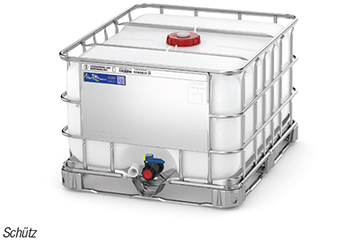 The new Ecobulk MX 560 intermediate bulk container (IBC; photo) has a lower height than standard models and a nominal volume of 560 L (150 gal). The MX 560 offers a significant advantage when shipping by sea: the pallet size makes optimum use of the storage and transport space in standardized large-capacity containers, even for mixed loads with larger MX IBC variants. With triple stacking throughout, 30 IBCs of this model will fit in a 20-ft ISO container. The four horizontal tubes of the steel grid provide the necessary stability and ensure secure stacking. The large, metal label plate, which covers eight fields of the steel grid, provides plenty of space for detailed product information. With its reduced capacity and optimized footprint, the new IBC offers lower capital tie-up and shorter storage times for products with a slow turnover. The IBC can also be equipped with an ethylene vinyl alcohol (EVOH) permeation barrier, which ensures product quality, safeguards the filling product against changes in the environment and against potential contamination by stopping oxygen, nitrogen and other gases from permeating in and out of the container. — Schütz GmbH & Co. KGaA, Selters, Germany
The new Ecobulk MX 560 intermediate bulk container (IBC; photo) has a lower height than standard models and a nominal volume of 560 L (150 gal). The MX 560 offers a significant advantage when shipping by sea: the pallet size makes optimum use of the storage and transport space in standardized large-capacity containers, even for mixed loads with larger MX IBC variants. With triple stacking throughout, 30 IBCs of this model will fit in a 20-ft ISO container. The four horizontal tubes of the steel grid provide the necessary stability and ensure secure stacking. The large, metal label plate, which covers eight fields of the steel grid, provides plenty of space for detailed product information. With its reduced capacity and optimized footprint, the new IBC offers lower capital tie-up and shorter storage times for products with a slow turnover. The IBC can also be equipped with an ethylene vinyl alcohol (EVOH) permeation barrier, which ensures product quality, safeguards the filling product against changes in the environment and against potential contamination by stopping oxygen, nitrogen and other gases from permeating in and out of the container. — Schütz GmbH & Co. KGaA, Selters, Germany
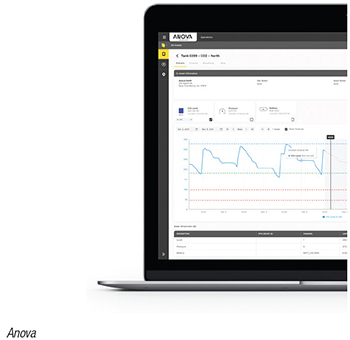 The Transcend IoT Platform streamlines industrial-gas supply-chain data by integrating data from multiple remote-monitored tanks, as well as adjacent equipment, such as vaporizers, compressors, pipelines, programmable logic controllers (PLCs) and other advanced systems. Users have the ability to visualize key parameters in a single platform, such as tank level and pressure, along with advanced systems flowrates, ambient temperatures, pressure and other variables, all in customizable dashboards. The insights provided by Transcend can help users access enhanced predictive analytics and accelerate digitalization across the entire supply chain. — Anova, New Providence, N.J.
The Transcend IoT Platform streamlines industrial-gas supply-chain data by integrating data from multiple remote-monitored tanks, as well as adjacent equipment, such as vaporizers, compressors, pipelines, programmable logic controllers (PLCs) and other advanced systems. Users have the ability to visualize key parameters in a single platform, such as tank level and pressure, along with advanced systems flowrates, ambient temperatures, pressure and other variables, all in customizable dashboards. The insights provided by Transcend can help users access enhanced predictive analytics and accelerate digitalization across the entire supply chain. — Anova, New Providence, N.J.
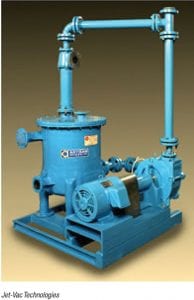 The Fume Scrubber product line (photo) offers a reliable way to remove and neutralize acid fumes, noxious laboratory gases, particulate matter, odors, dust and condensable contaminants in manufacturing processes. The Fume Scrubbers work by pulling contaminated fumes and gases into the flow of a wash fluid, such as dilute sodium hydroxide. The intimate mixing of air/gas and liquid streams produces an effective and instant cleaning solution. Scrubbed of contaminants, the air/gas mixture is then separated from the wash liquid in a separation tank. The washing fluid is then recycled and reused. The effectiveness of the process is enhanced by properly matching the contacting scrubber fluid with the air or gas feed stream. This methodology is said to be more effective than filters for gas and condensable vapor removal. Furthermore, Fume Scrubber systems are not impacted by corrosive fumes and require little maintenance. — Jet-Vac Technologies, Stoughton, Mass.
The Fume Scrubber product line (photo) offers a reliable way to remove and neutralize acid fumes, noxious laboratory gases, particulate matter, odors, dust and condensable contaminants in manufacturing processes. The Fume Scrubbers work by pulling contaminated fumes and gases into the flow of a wash fluid, such as dilute sodium hydroxide. The intimate mixing of air/gas and liquid streams produces an effective and instant cleaning solution. Scrubbed of contaminants, the air/gas mixture is then separated from the wash liquid in a separation tank. The washing fluid is then recycled and reused. The effectiveness of the process is enhanced by properly matching the contacting scrubber fluid with the air or gas feed stream. This methodology is said to be more effective than filters for gas and condensable vapor removal. Furthermore, Fume Scrubber systems are not impacted by corrosive fumes and require little maintenance. — Jet-Vac Technologies, Stoughton, Mass.